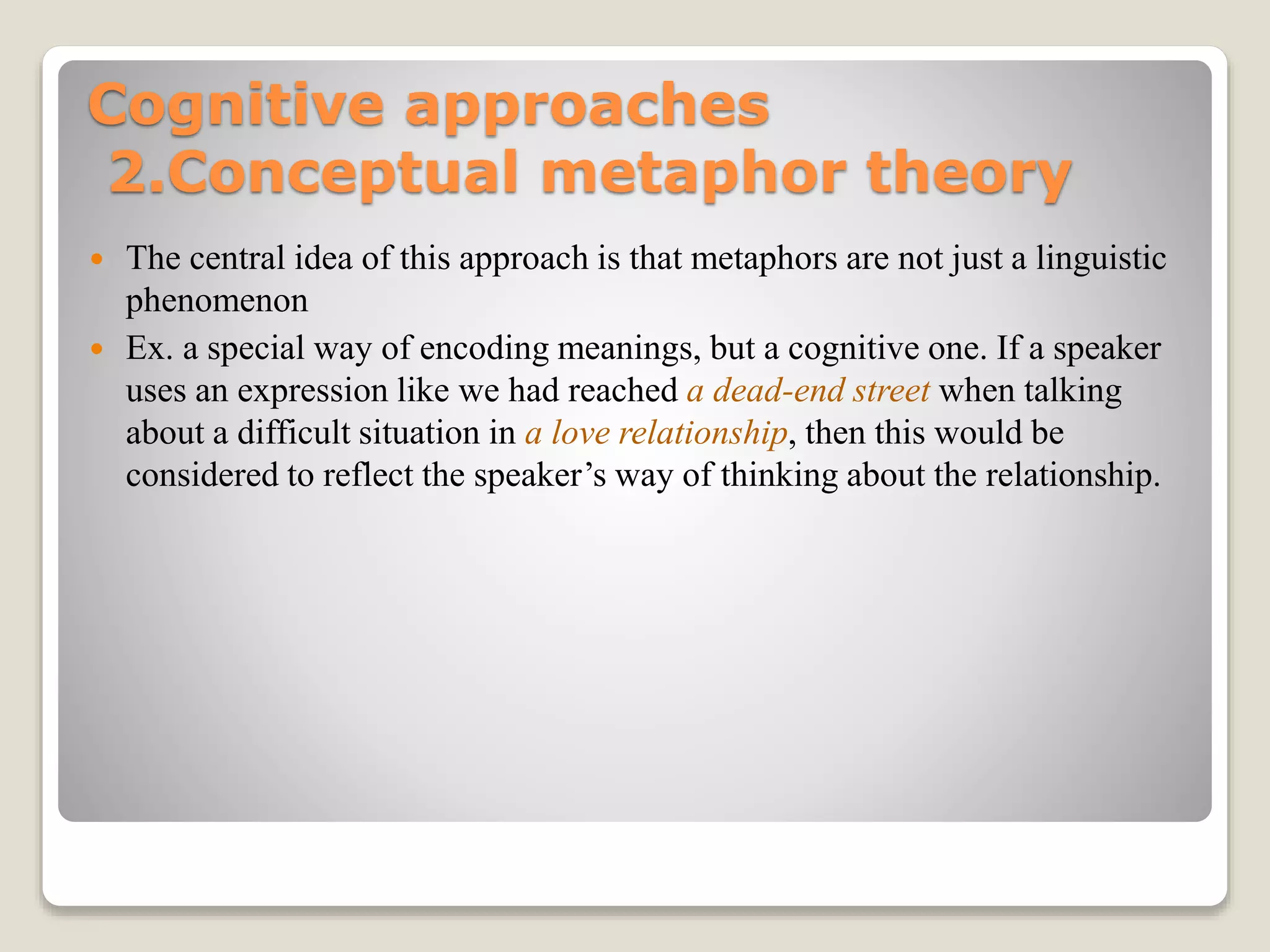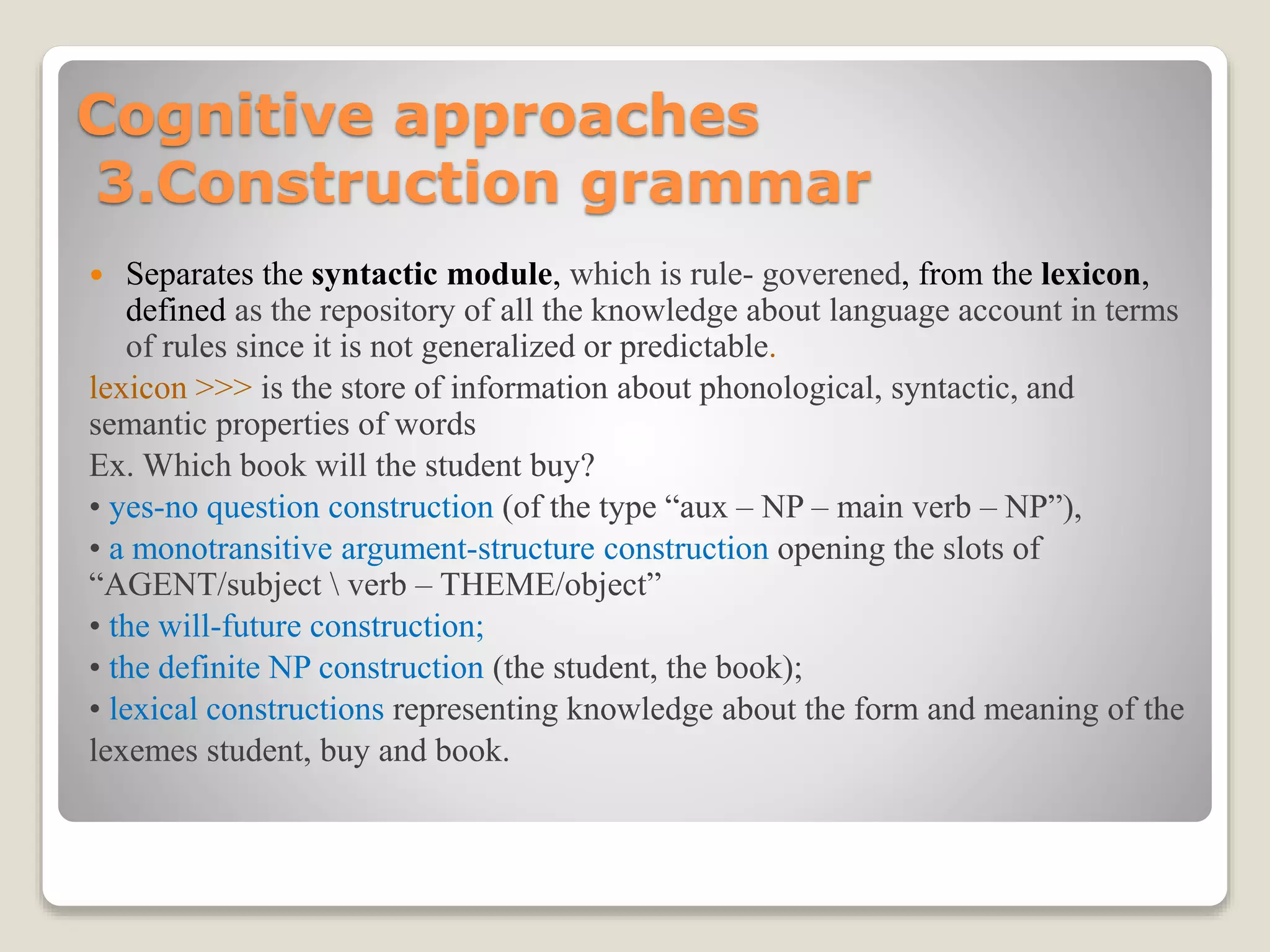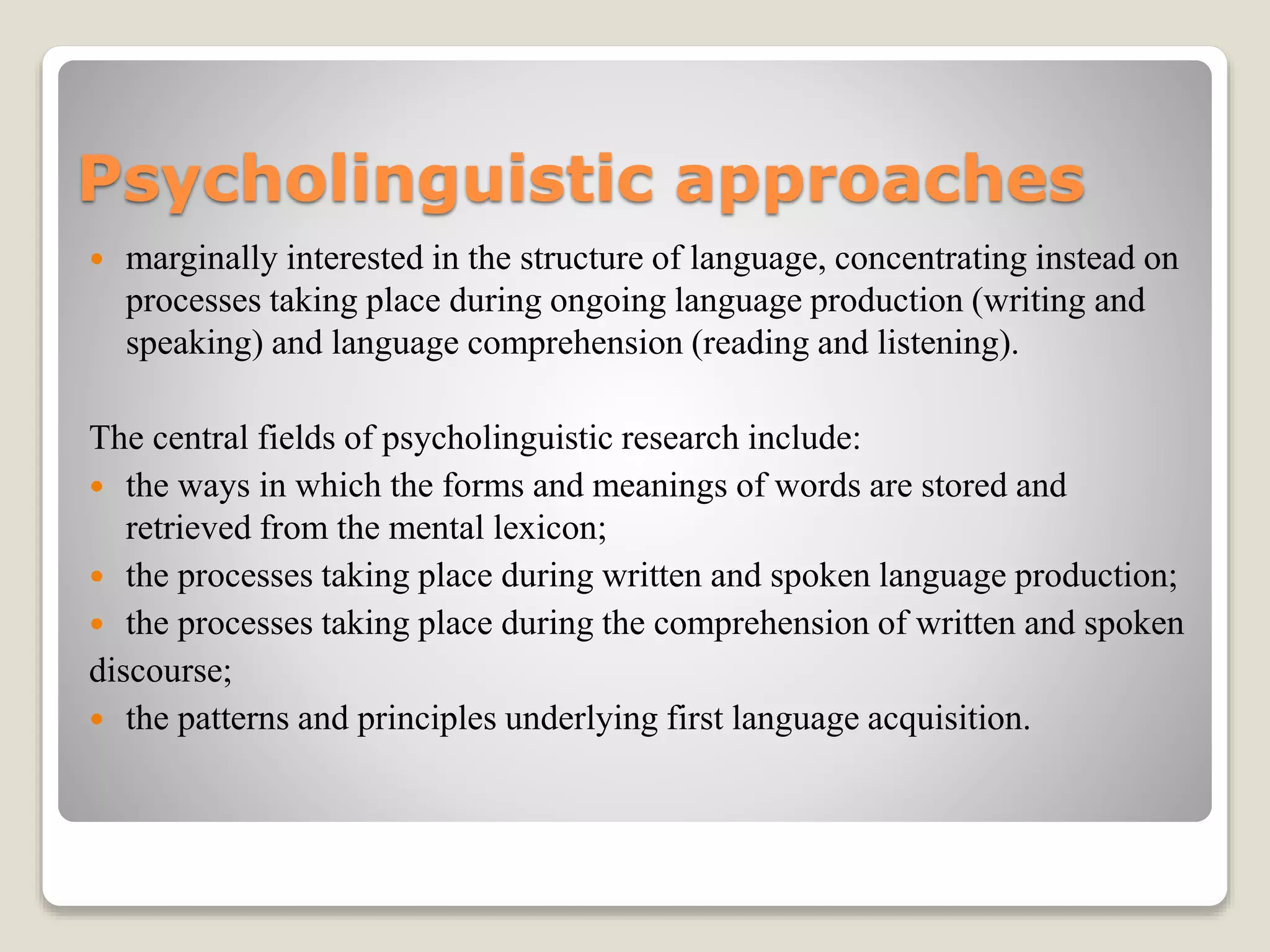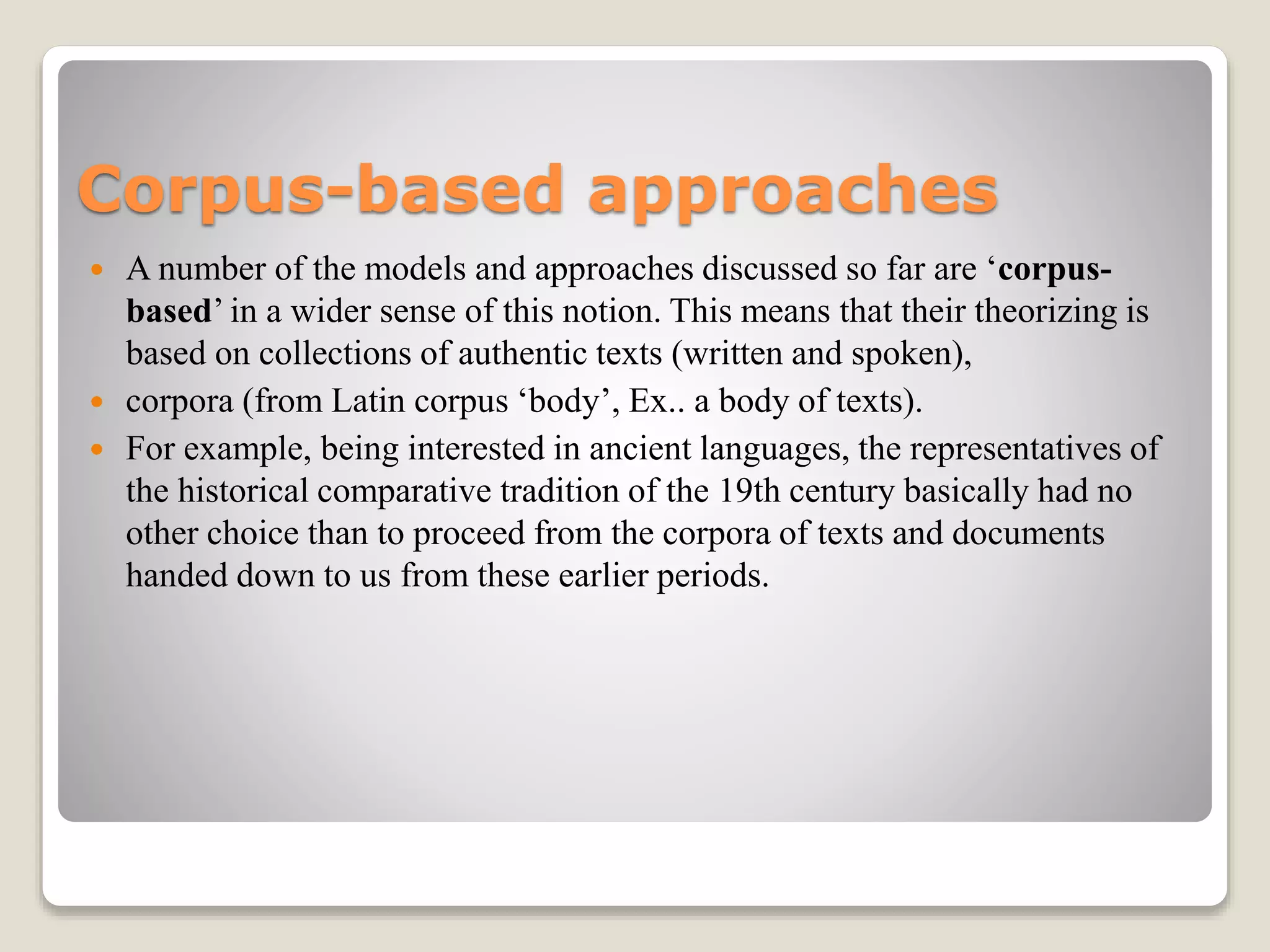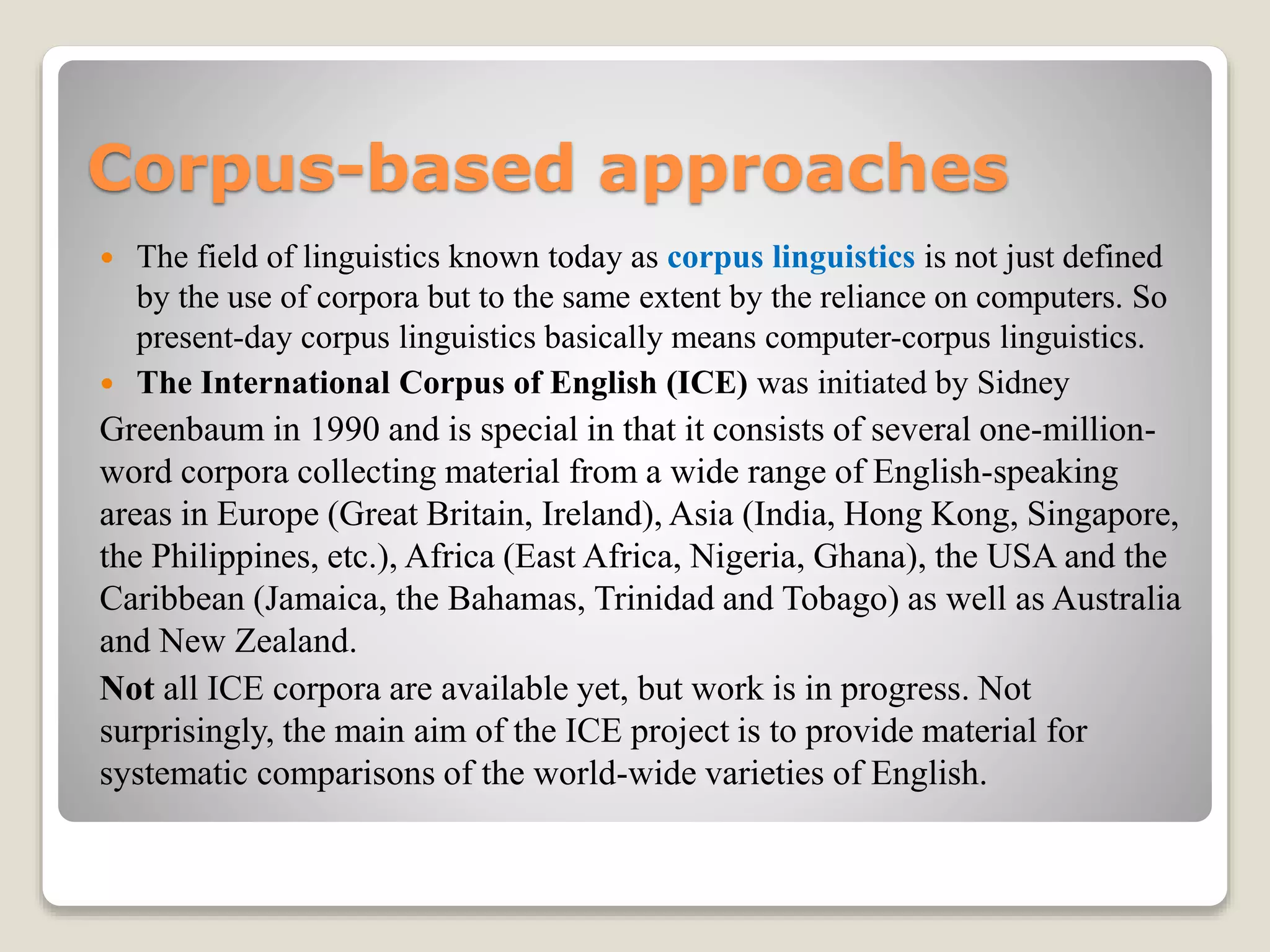This document outlines several linguistic theories and approaches, including:
- Structuralism founded by Ferdinand de Saussure which views language as a system of signs.
- American structuralism which took a behaviorist approach and focused on observable patterns.
- Generative grammar by Noam Chomsky which aims to explain a speaker's innate linguistic knowledge.
- Cognitive approaches like prototype theory and conceptual metaphor theory which see language as reflecting mental representations.
- Psycholinguistic approaches which study language production and comprehension processes.
- Corpus-based approaches which use large text databases to analyze authentic language usage.
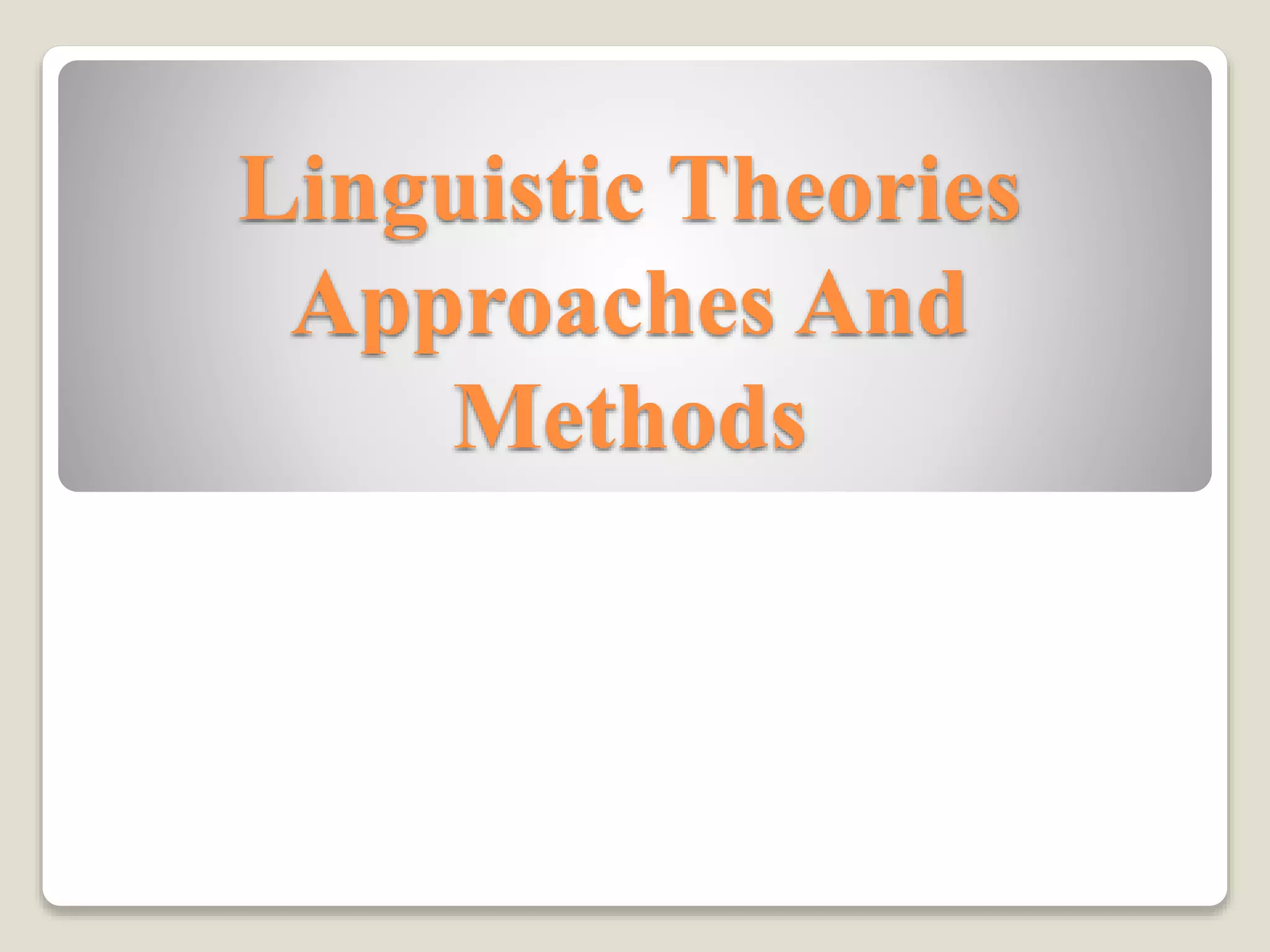
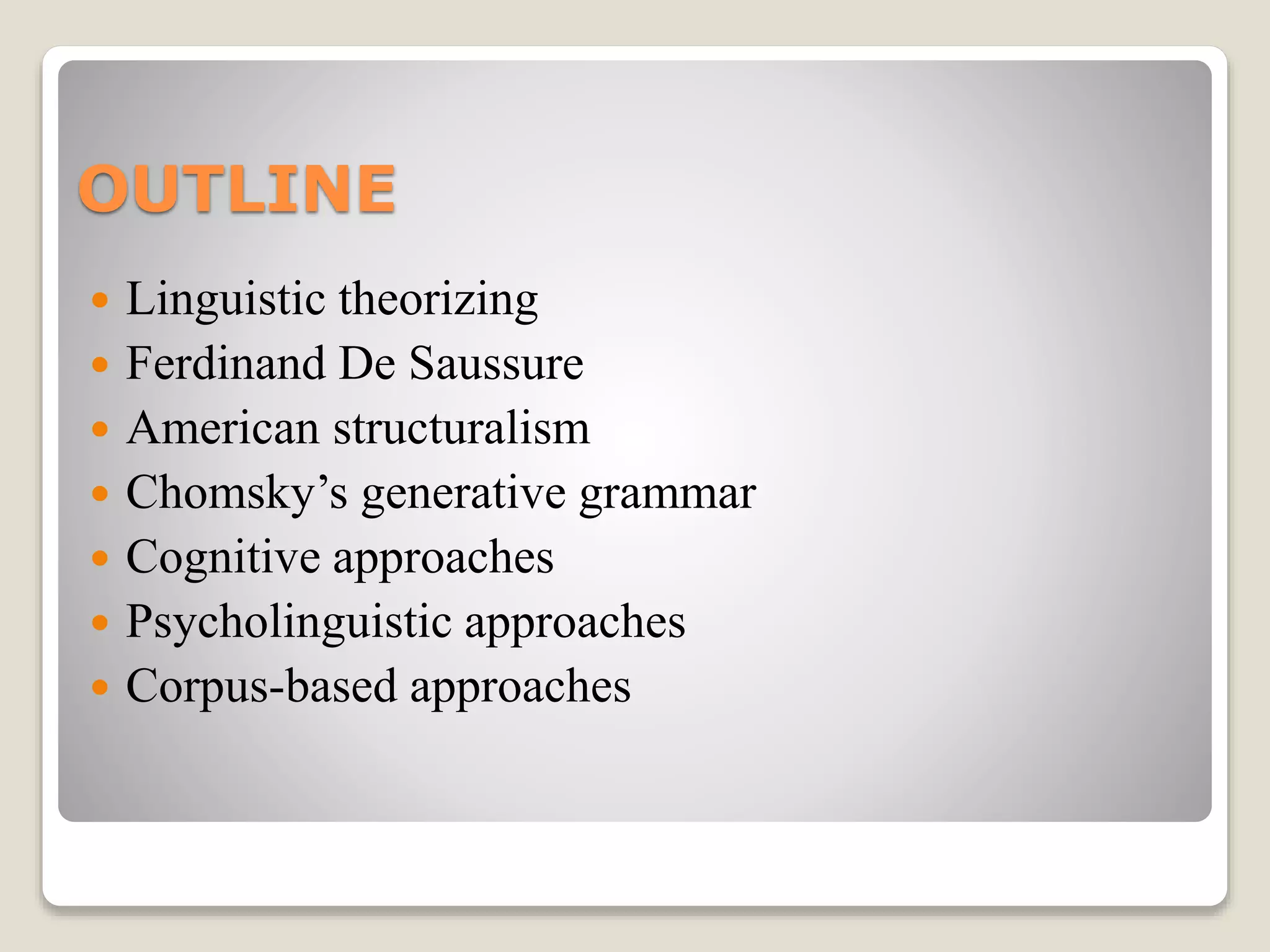

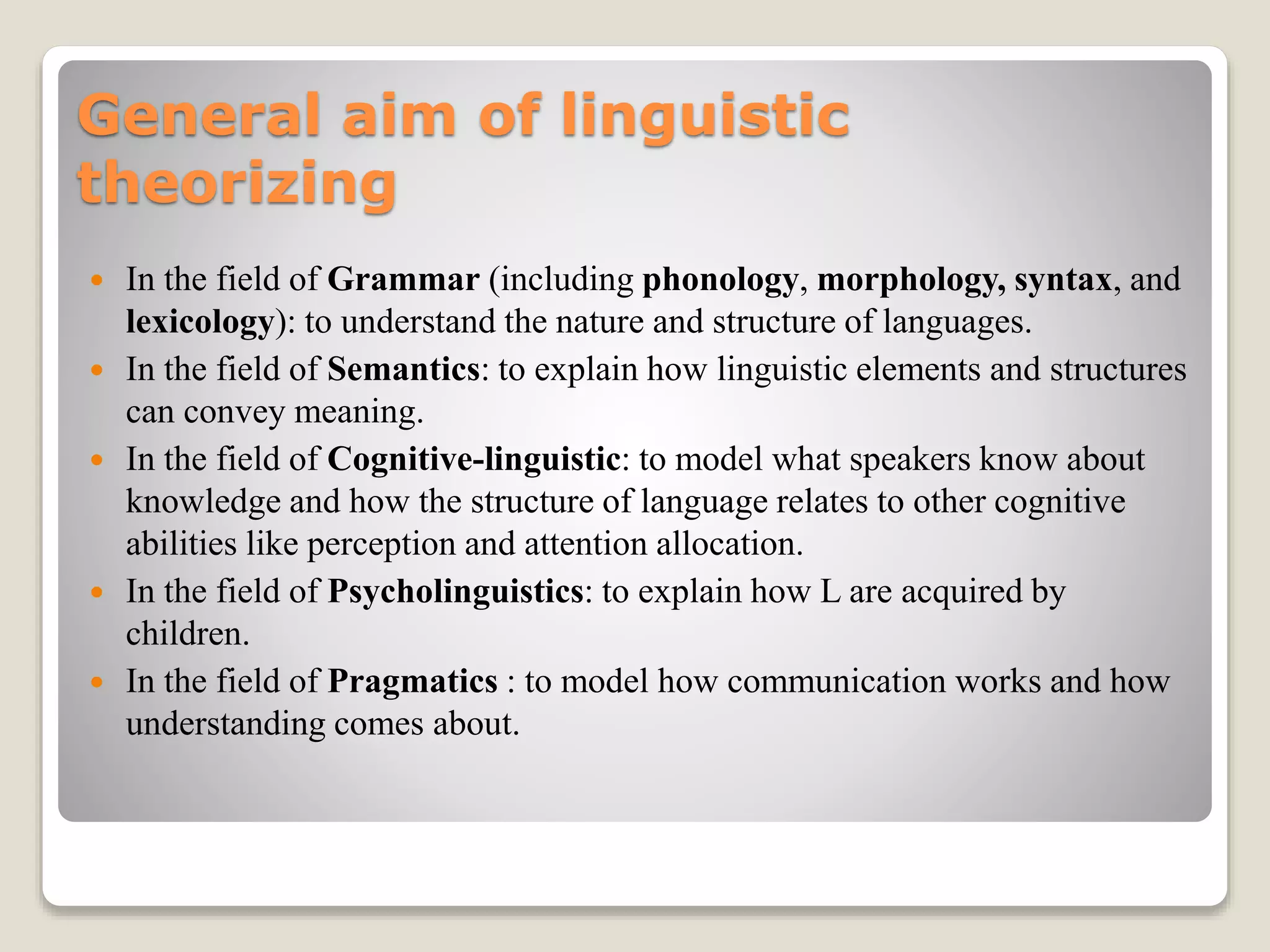
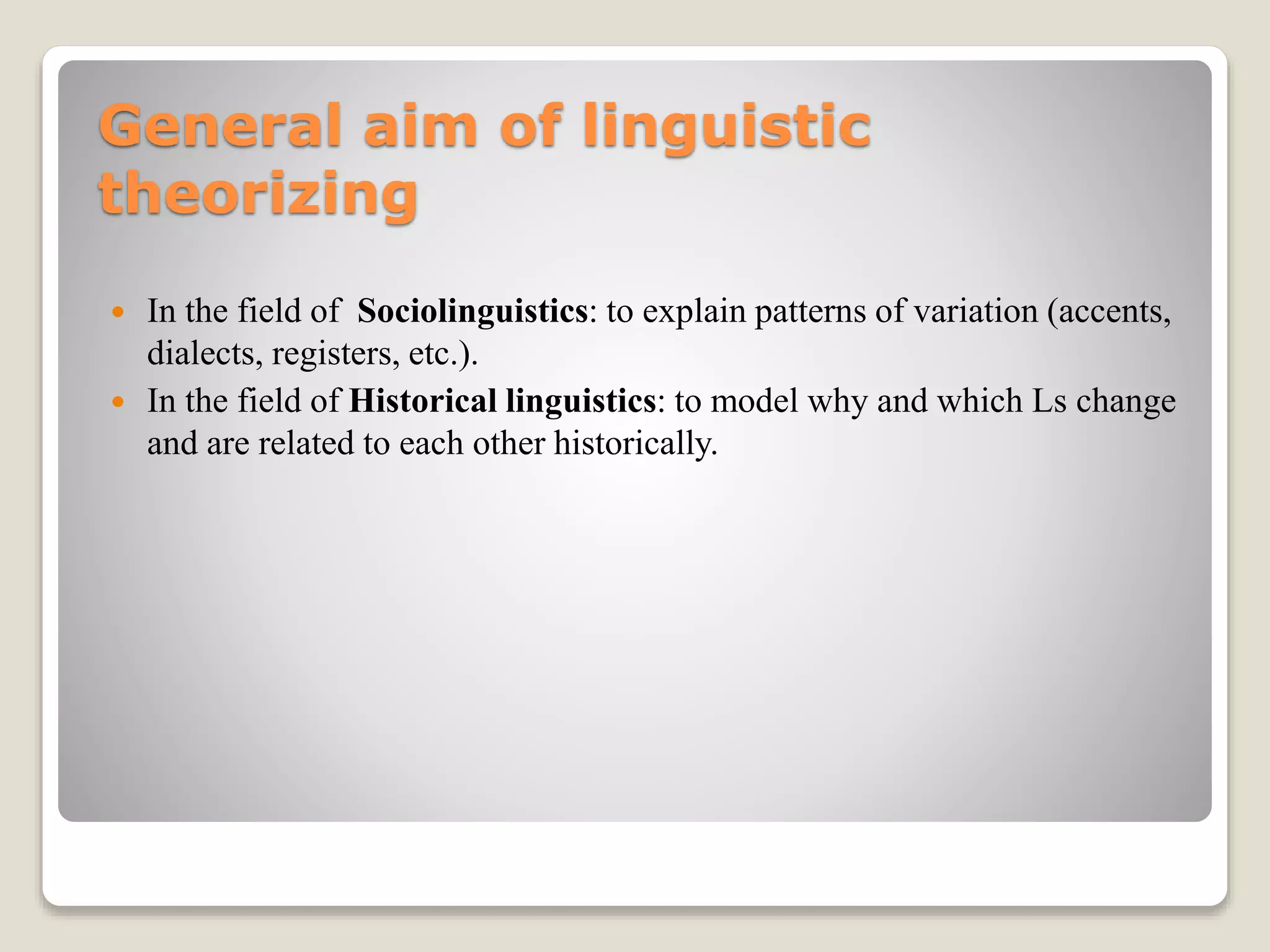

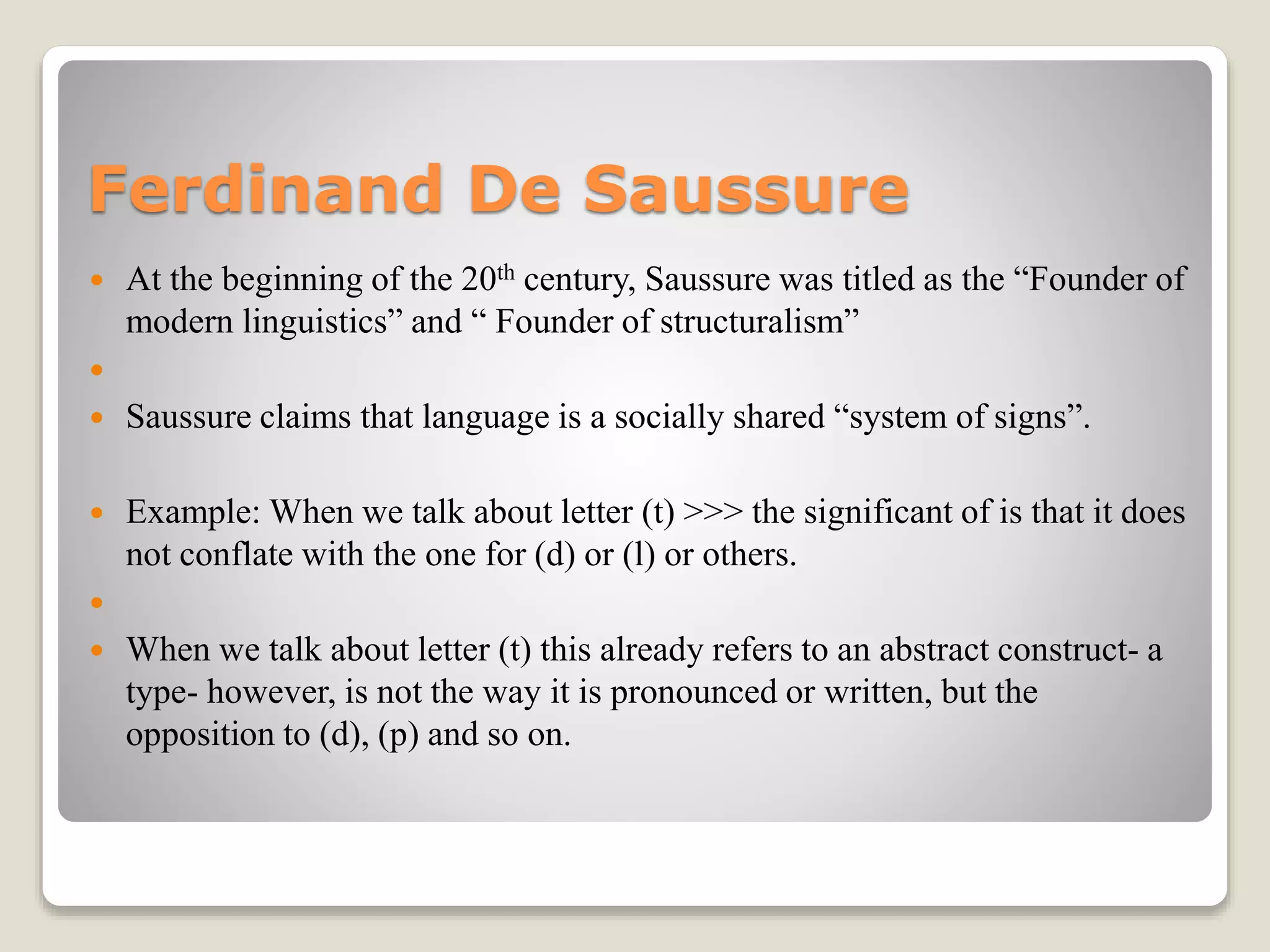
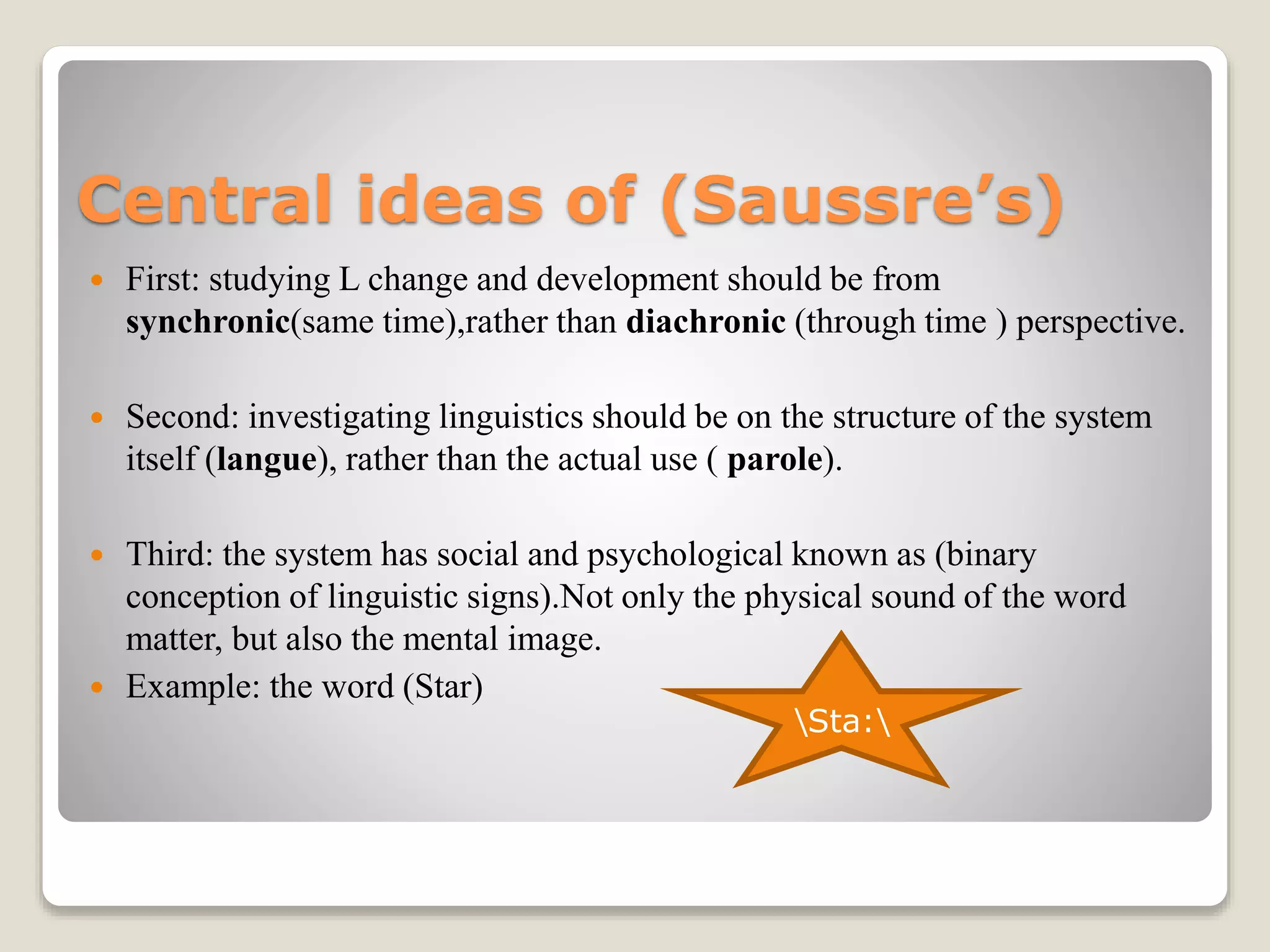
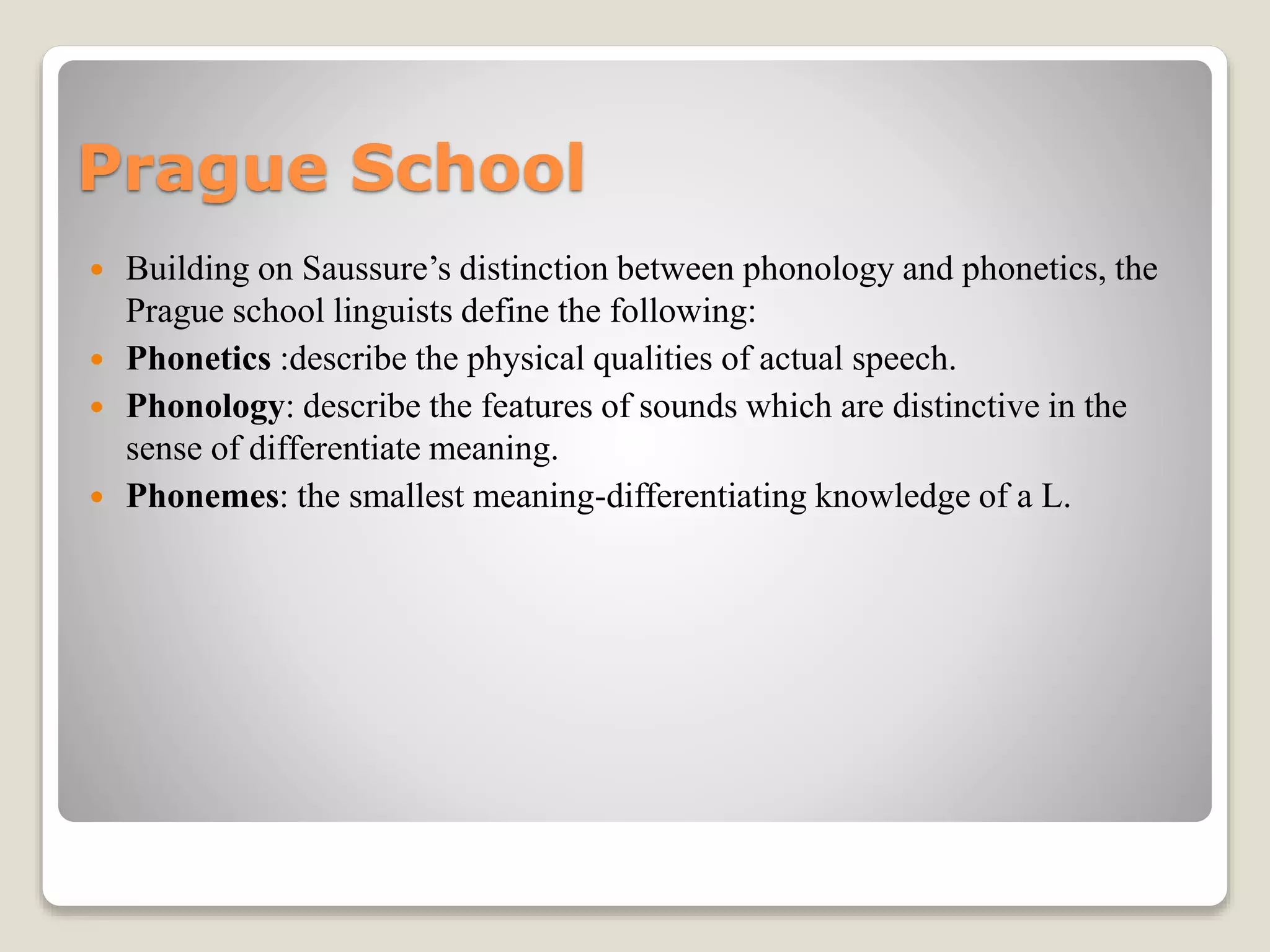
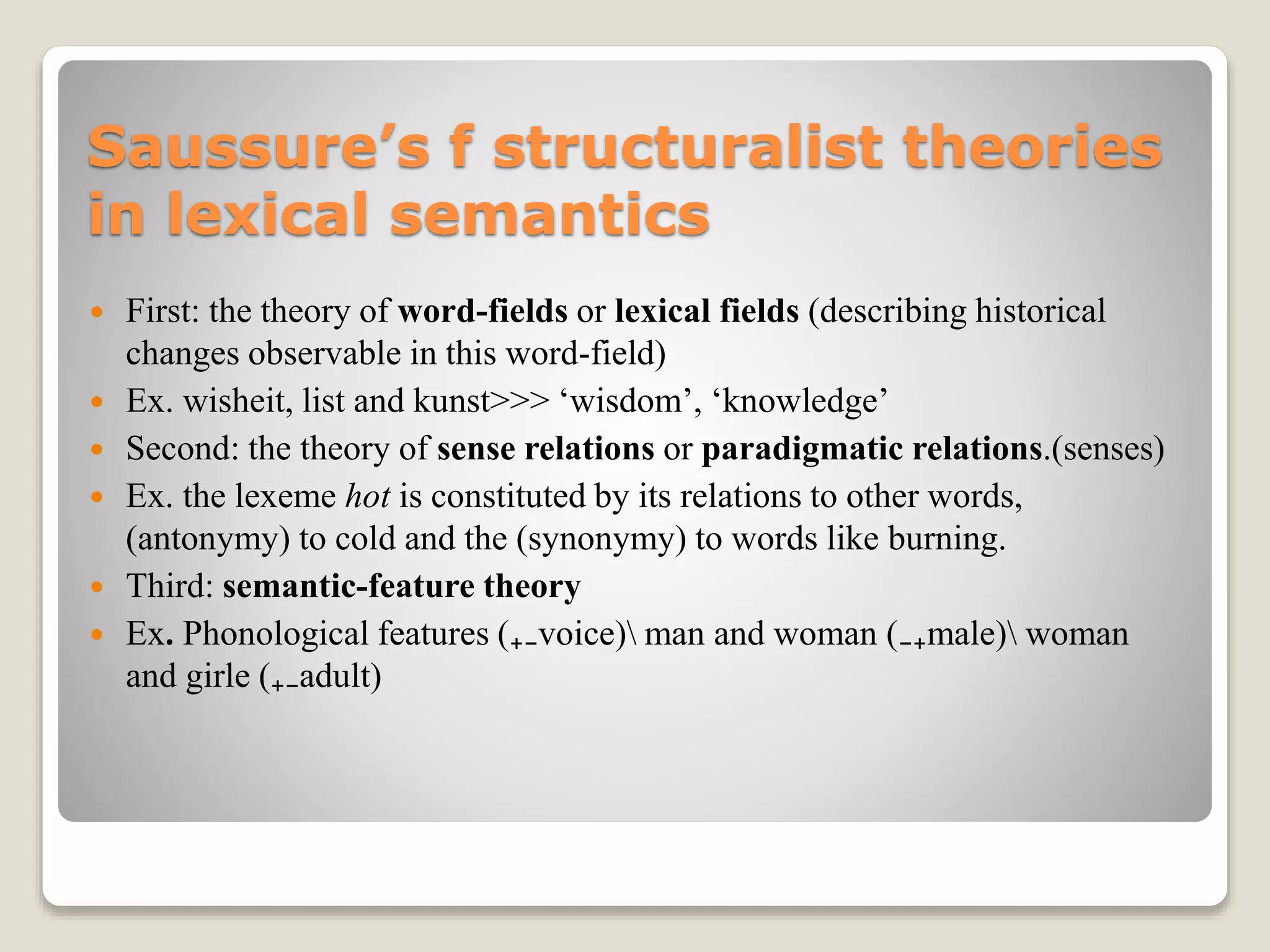
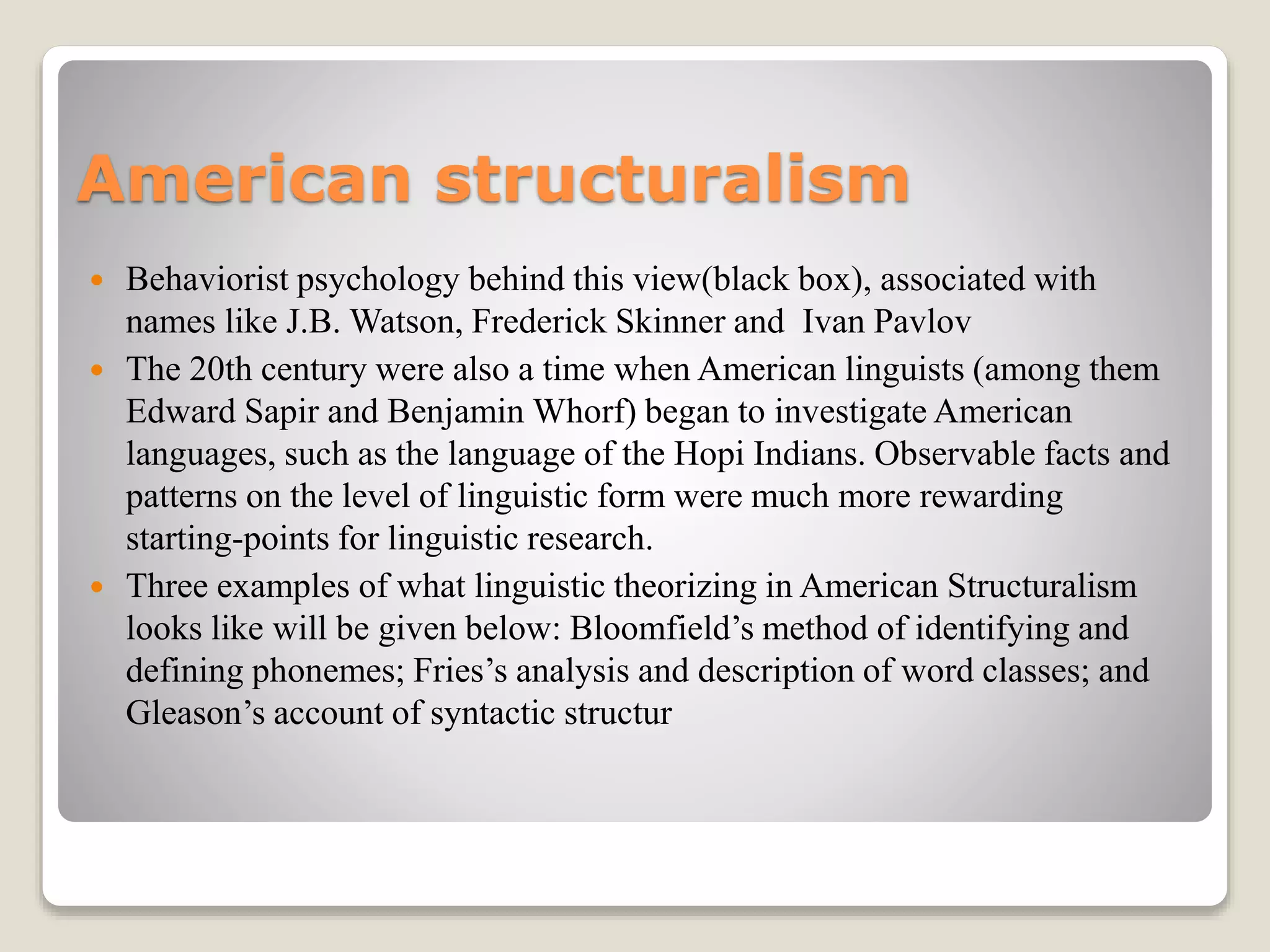
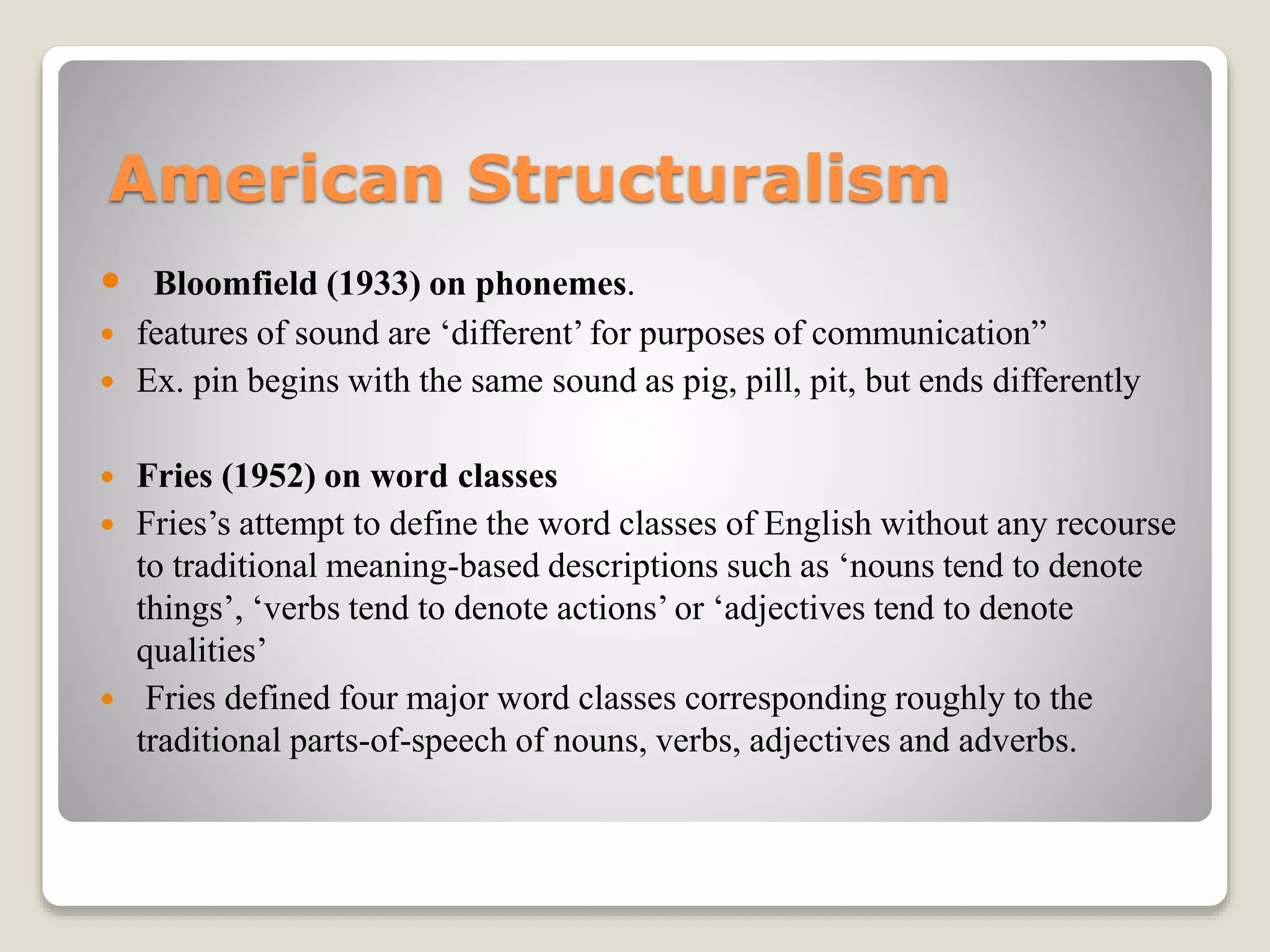
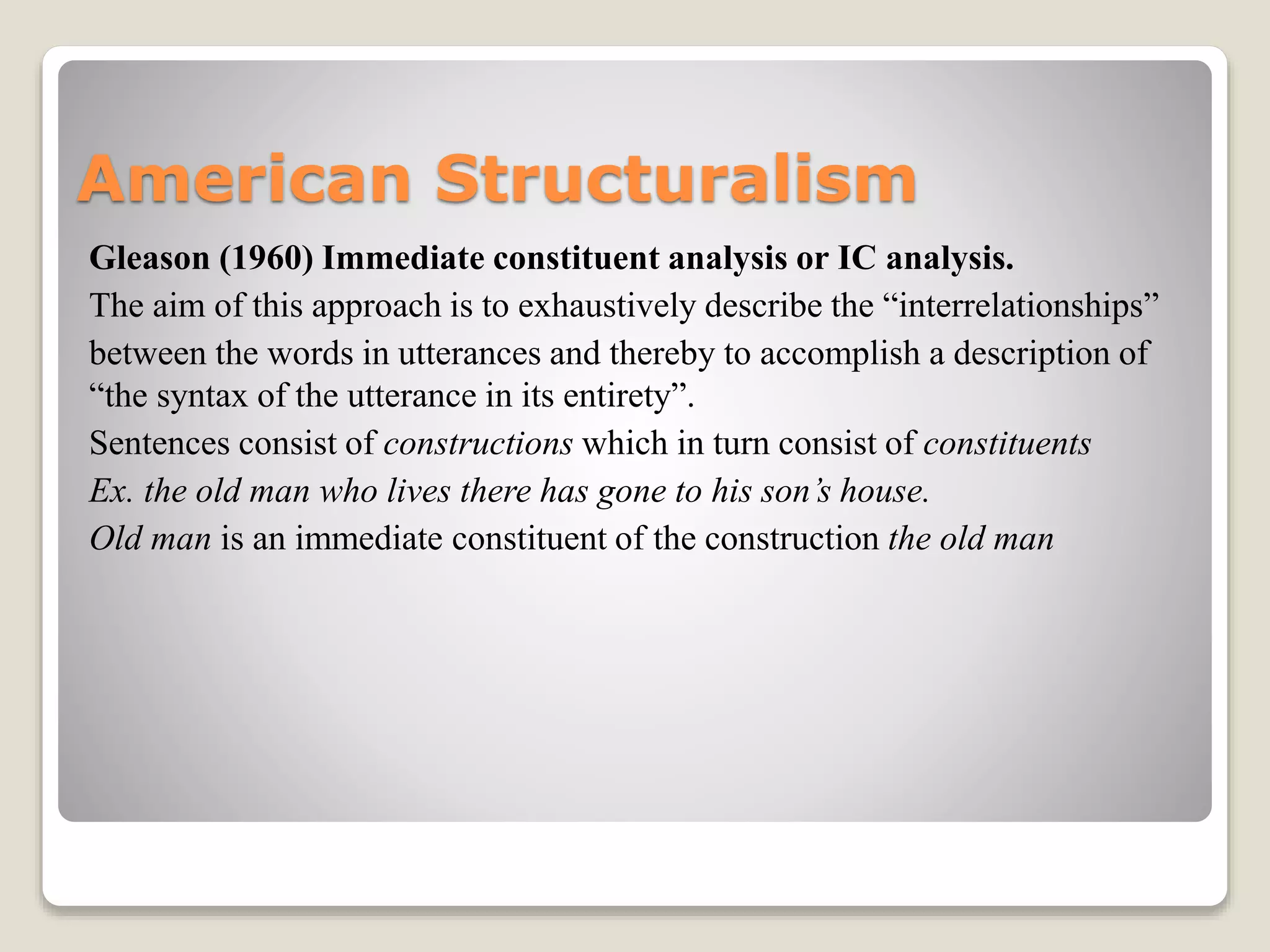
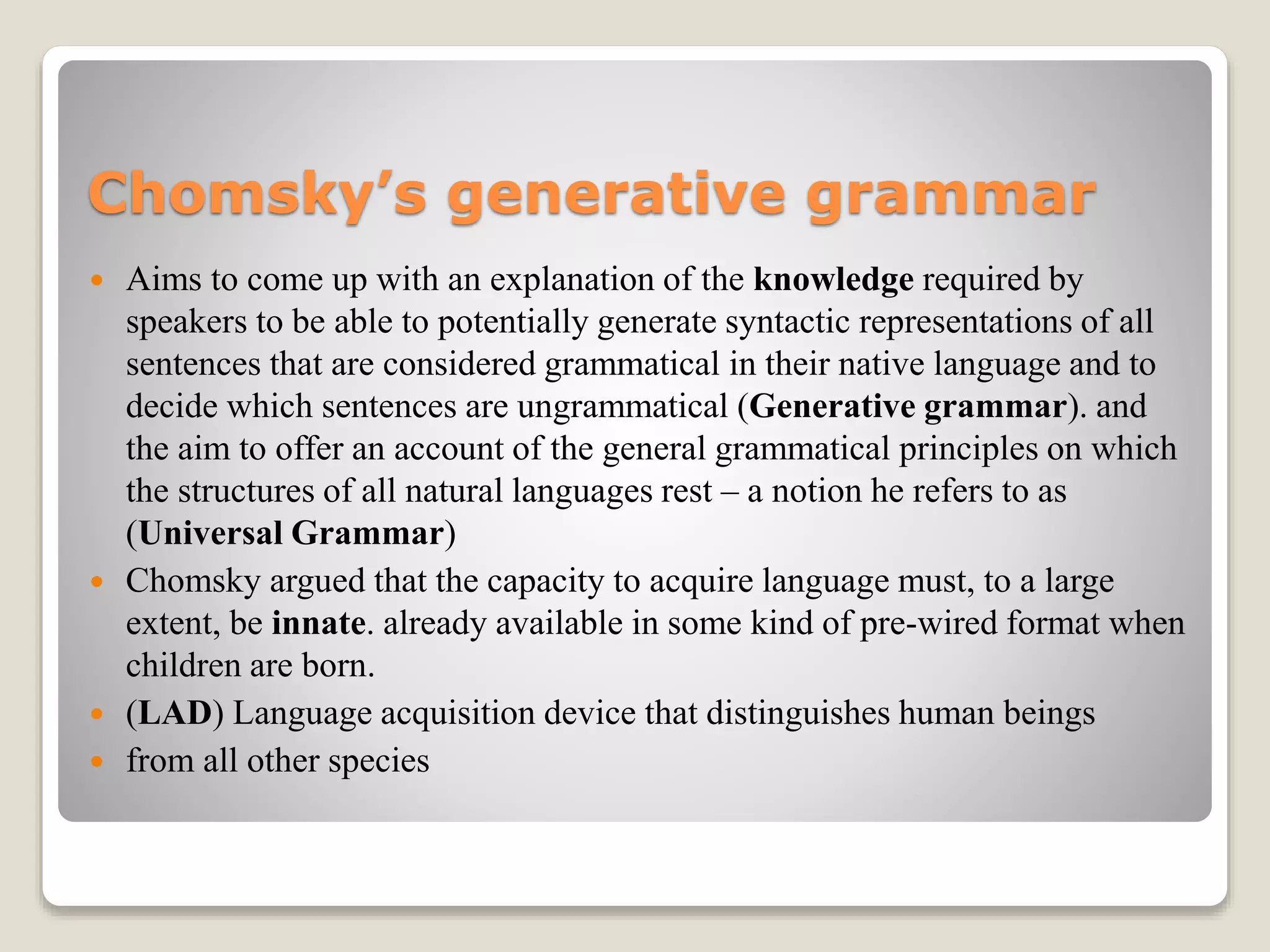
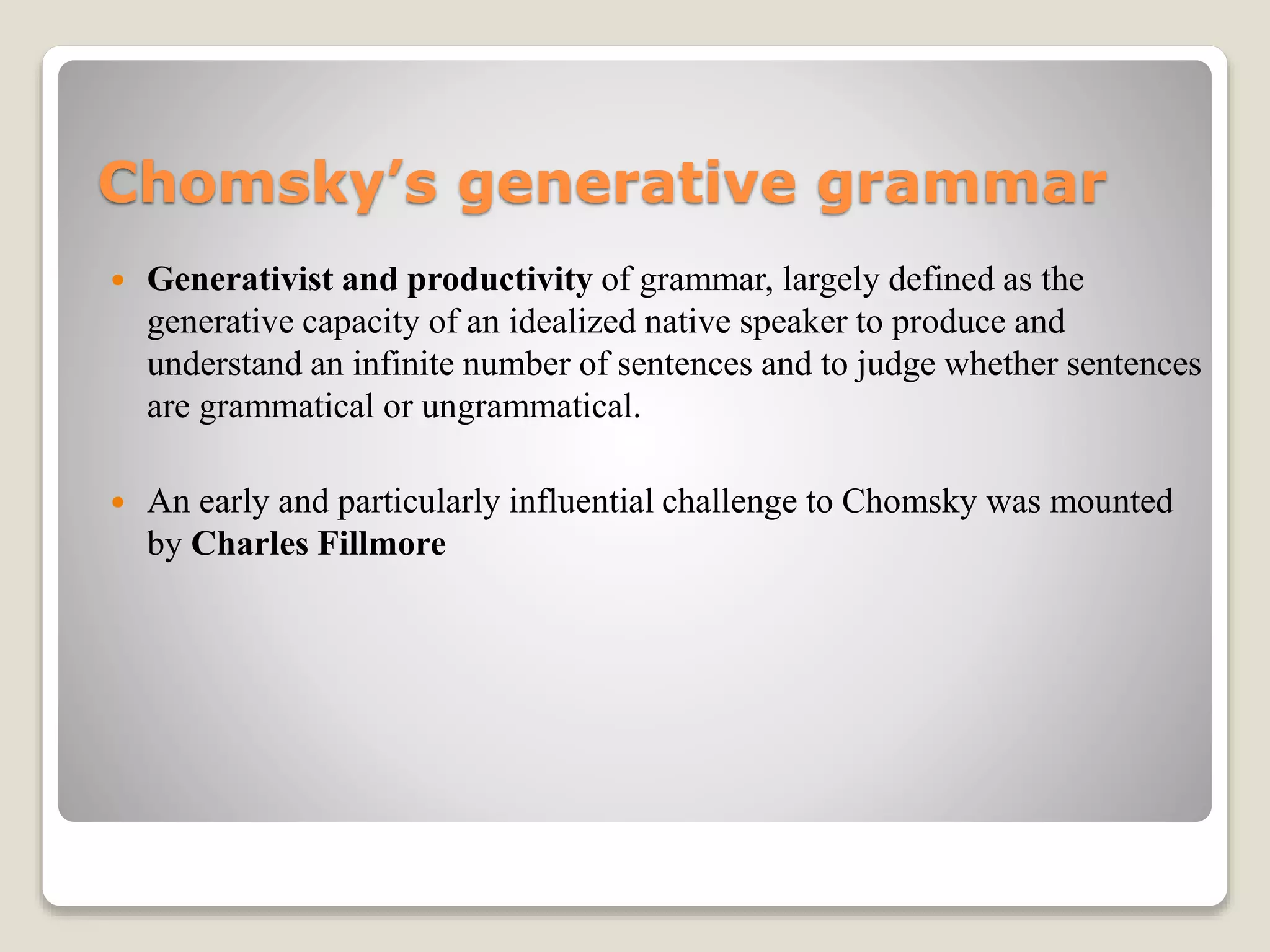
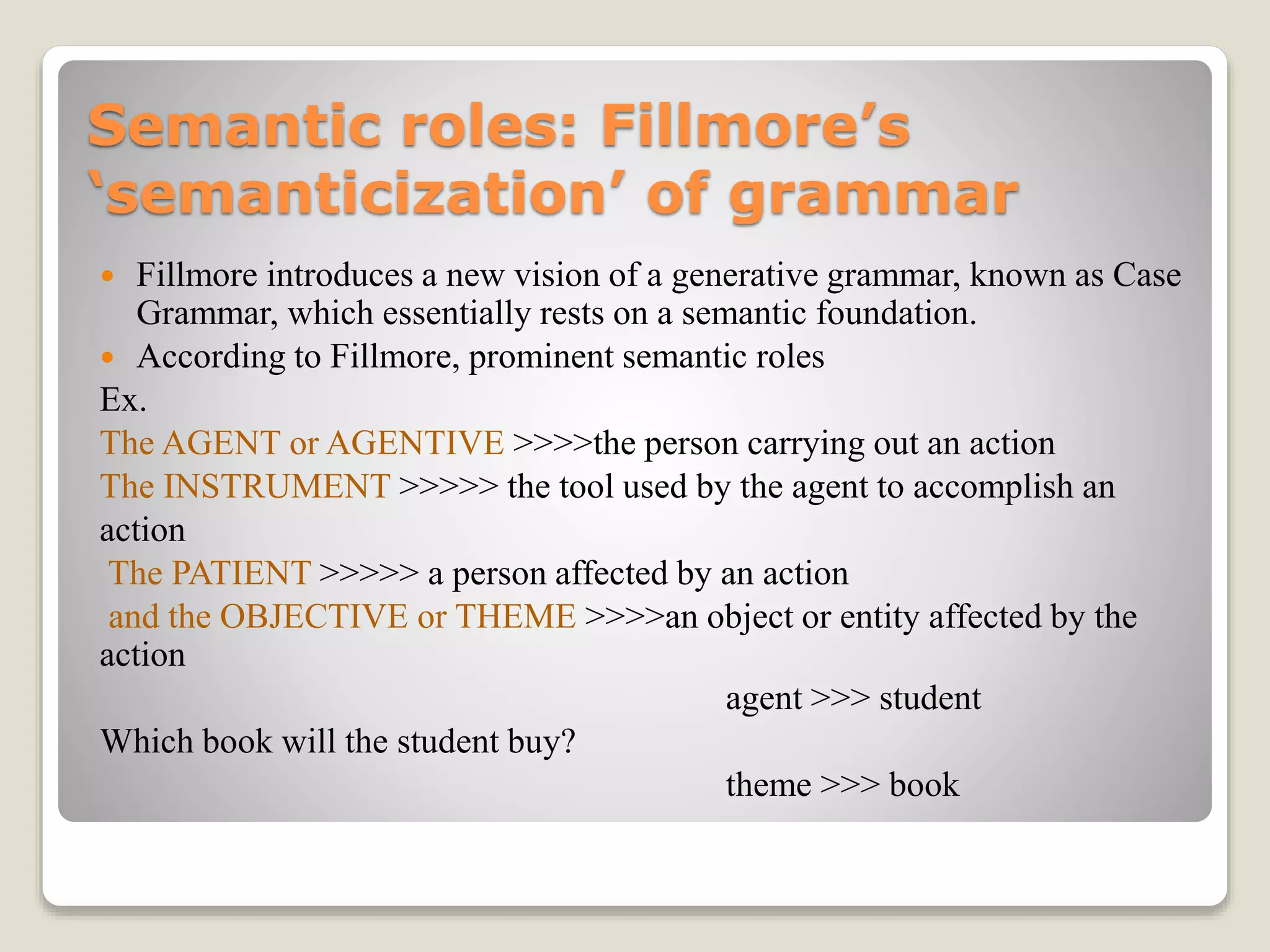

![Cognitive approaches
1.Prototype theory
The aim of feature semantics is to determine those distinctive features that
give rise to oppositions between neighboring word meanings.
Ex. The meaning of the lexeme bachelor was described by means of the
distinctive features
[+HUMAN], [+ADULT], [+MALE] and [-MARRIED].
To describe the meaning of bachelor according to this approach, it is first
necessary to realize that such a concept only makes sense in the framework of
a cognitive and cultural model.](https://image.slidesharecdn.com/linguistictheoriesapproachesandmethods-211120171752/75/Linguistic-theories-approaches-and-methods-18-2048.jpg)
